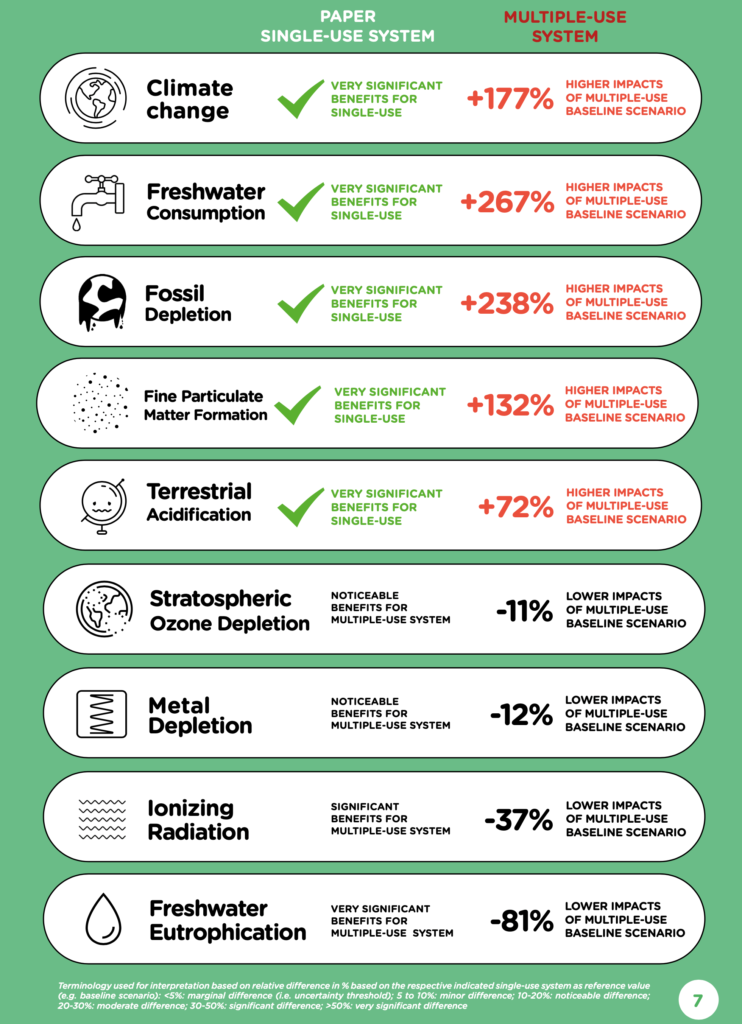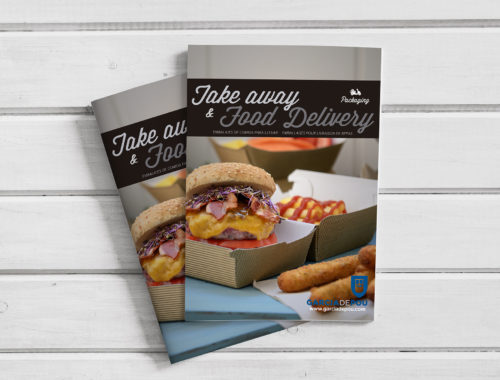García de Pou echoes a recent study on the use of paper and cardboard packaging in the hotel and catering industry, which shows that we are on the right track to make our planet more sustainable. The comparative study on Life Cycle Assessment (LCA) carried out by Ramboll concludes that quick service restaurants that use paper and cardboard packaging contribute to a lower consumption of drinking water, generate fewer CO2 emissions into the atmosphere and help to slow down the depletion of fossil fuels, compared to those that use reusable packaging. These are key factors in the European Union’s goals to end climate change.
The main problem with reusable packaging is the large amount of energy and water consumed during washing and drying to ensure it is hygienic and safe for reuse by customers. This is true even with the most efficient dishwashers. In that respect, single-use packaging does not worsen water stress problems, at a time when water scarcity is a major concern around the globe. Another drawback of reusable packaging is the higher CO2 emissions it generates over its life cycle compared to single-use packaging.
The report analyses the life cycle of both types of packaging, i.e. from manufacture through transport to waste treatment. The conclusions are clear. In general, single-use paper and board packaging has a lower environmental impact than reusable packaging.
The comparison was carried out by Ramboll, an independent engineering Danish company. The analysis was based on one year’s worth of data from quick service restaurants where consumption takes place on the premises. It was also based on data from packaging and packaging manufacturers across Europe. Ramboll has included in its study food boxes, plates, cutlery, glasses, lids and all the tableware used in these catering businesses.

The Ramboll study, published by the European Paper Packaging Alliance (EPPA), reveals that single-use packaging made from paper and board has less environmental impact than reusable solutions made from materials such as plastic, glass or ceramics.
The lower consumption of drinking water is one of the key factors in favour of single-use paper and board packaging. In addition, the fine particulate matter released by the manufacturing processes, which causes a variety of respiratory and general health problems, is also lower in single-use packaging.
Single-use packaging also reduces the consumption of fossil fuels, which helps to limit the greenhouse effect, and avoids mortgaging future generations with the depletion of a limited resource. Finally, emissions of acidifying substances into the atmosphere, which lead to changes in the chemical composition of soil and surface water, are also lower in the case of single-use packaging.
It should also be noted that most of the paper tableware consumed in Europe comes from sustainably managed forests, which favours reforestation.
The study has been independently assessed by the certification body Germany’s TÜV (Technischer Überwachungsverein). All data used are available and representative and have been duly checked. The assessments and the underlying data collection and calculation procedures are transparent and traceable. Moreover, it is one of the most comprehensive studies to date in this area.
Ramboll’s research ultimately demonstrates that favouring the use of paper and cardboard packaging in quick-service restaurants is more sustainable and environmentally friendly. And that reusable packaging carries significant environmental costs that are often forgotten. At a time when the use of paper and board packaging in catering businesses has increased considerably, it is logical and necessary for consumers to ask themselves about the impact of this type of tableware on the environment. However, the data to address this question can only come from science and assumptions and false appearances must be set aside. Fortunately, this European study sheds light on the issue and provides rigorous scientific data.







